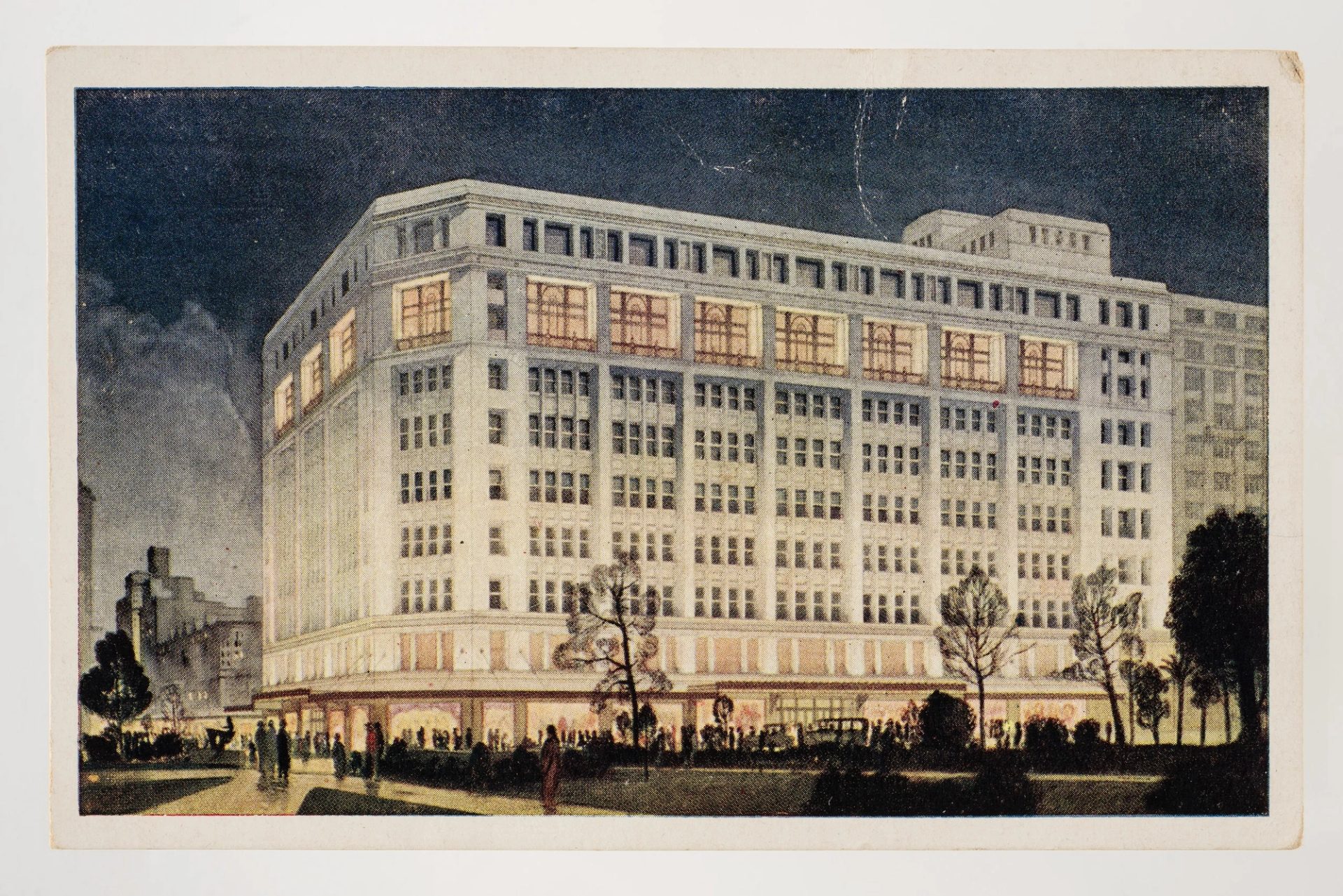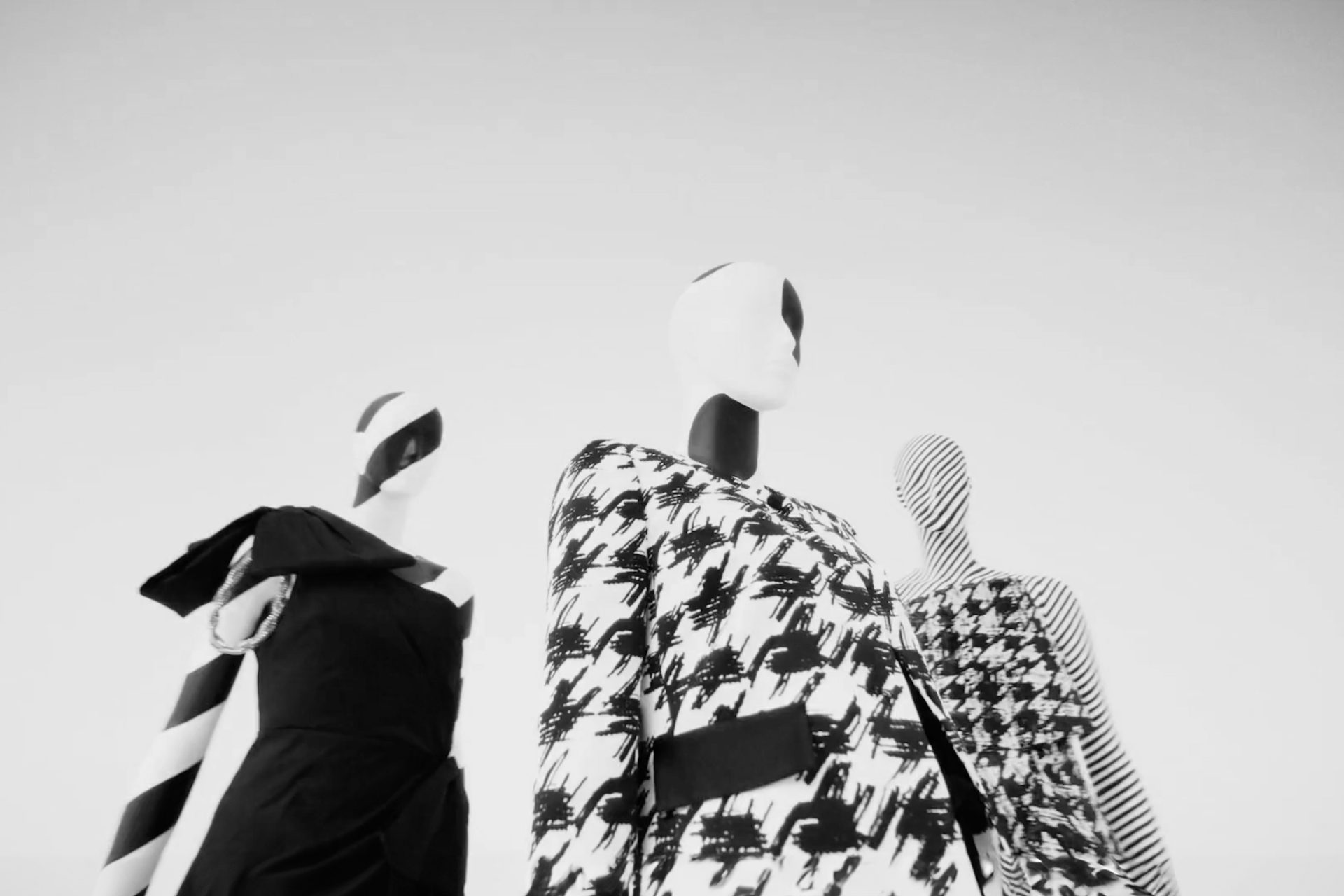David Jones Archive

The David Jones acquisition is designed to preserve and amplify the retailer’s 186-year history and mark the beginning of a partnership with the 143-year-old museum.
In 1838, Le Bon Marché department store first opened its doors on the Left Bank of Paris. That same year in Sydney, David Jones welcomed customers to his eponymous emporium right in the heart of the city. LeBon Marché (the good deal) is celebrated by Émile Zola as the thinly veiled Au Bonheur des Dames (The Ladies’ Delight) retailer in his 1883 novel of the same name. David Jones is fictionalised as upmarket department store Goode’s in Australian author Madeleine St John’s 1993 novel The Women in Black, which in turn informed Bruce Beresford’s 2018 film Ladies in Black and the 2024 TV series of the same name.
David Jones has long been a conduit between Australia and France, and the gifting of the department store’s archive by David Jones to Powerhouse embeds that story in a broader narrative of industry and creativity.
Named after its Welsh founder, David Jones ‘has been an importer of French fashions since the 19th century,’ recounts Powerhouse senior collection curator Roger Leong. ‘Later, they would import original garments from the great Parisian couture houses and offer clients the service of reproducing those designs in David Jones’ workrooms.’
As interest in fashion and luxury products peaked post-World War II, so did David Jones’ ambition to become associated with Parisian chic.
In 1946, the store organised its first French fashion parade to showcase the works of sought-after haute couturiers including Pierre Balmain and Jacques Fath alongside the houses of Carven, Patou and Molyneux. In 1947, David Jones signed an exclusive deal with Balmain to create outfits especially with the lifestyle of Australian women in mind. And only months after Christian Dior burst onto the Parisian fashion scene with his audacious ‘New Look’ collection that same year, featuring wasp waistlines, slender shoulders and ample skirts, DJs inked a deal with the man acclaimed as the world’s most important couturier to show the first ever Dior collection outside of Paris.
While the original dresses were show pieces only (that is, not for sale), in a move of retail ingenuity David Jones convinced Dior to allow it to reproduce these garments in its own workrooms so that Australian women could ‘get the look’ for less.
‘One of the great revelations of the David Jones workrooms is the high quality of workmanship,’ notes Leong. ‘It was equivalent to any couture house in Paris at the time.’
A run sheet (or program) of garment names that were intoned as models walked along an elevated runway constructed in DJ’s Grand Restaurant included evocative monikers such as ‘Sydney’, ‘Melbourne’, ‘Air France’ and ‘Bon Voyage’ – testimony to the regard in which Dior held the Australian clientele, and David Jones.
In fact, the relationship was more than just a mutual aesthetic appreciation; it ran deeper than a solid retail deal. The house of Christian Dior was financed by fabric manufacturer Marcel Boussac, one of the wealthiest men in France. The voluminous skirts of the ‘New Look’ outfits were intended to showcase – and sell – extravagant yardage of textiles after years of wartime rationing. France was an important market for Australian Merino wool which it would mill into the type of noble fabrics haute couture required. Many of the Dior creations shown at David Jones were made from such wool, including a dramatic black and white houndstooth tweed that eventually morphed into the iconic David Jones identity.
Several of these notable printed programs are currently on display as part of an exhibition at David Jones to celebrate the acquisition of the archive by Powerhouse, including one titled An Exclusive Presentation by David Jones of Fifty Original Creations by Christian Dior with Adaptations: The First complete Dior collection ever to be shown outside Paris (1948). Other items on show include hats and hatboxes, gloves and milliner’s tools as well as garments designed by local couturière Carla Zampatti using black and white houndstooth or pied de poule (chicken foot) fabric.
Once demounted, the David Jones Archive – which also includes a superb cache of mid-20th century advertising posters and a pair of black satin Manolo Blahnik pumps once worn by David Jones ambassador Megan Gale – will be transported to Castle Hill to enter the Powerhouse Collection of more than 500,000 objects.
They will join over 300 pieces already in the Powerhouse Collection that were made by or bought at David Jones from the 1890s to the 1990s.
‘The earliest work I know of is a magnificent russet silk day dress with a tiny waist, enormous leg-o-mutton sleeves and a generous train,’ says Leong. ‘The silk damask looks like it could have come from a Paris couture house. The dress is stunning inside and out and has a David Jones label embroidered into the waist tape.’
In total, the Powerhouse Collection includes some 10,000 fashion items, from historical garments to contemporary creations by renowned Australian designers and brands including Jenny Kee and Linda Jackson of Flamingo Park, Akira Isogawa, Collette Dinnigan, Carl Zampatti, Berlei undergarments and Speedo swimwear.
The David Jones acquisition is designed to preserve and amplify the retailer’s 186-year history and mark the beginning of a partnership with the 143-year-old museum.
The 3-year partnership includes a mutual investment into the next generation of Australian designers by establishing the David Jones and Powerhouse Australian Design Commission. This annual award will invest $300,000 into Australian designers over three years to create new work that engages with the David Jones Archive.
Clothing by new generation designs brands Iordanes Spyridon Gogos and Miimi & Jiinda are also on show in The Gallery space at David Jones’ flagship Elizabeth Street Sydney store, highlighting the future-facing aspect of the partnership.
‘David Jones has always been modern, and we wanted to keep that sense of relevance in the exhibition,’ says Leong. ‘In fact, it was Charles Lloyd Jones, great-grandson of David Jones who initiated the David Jones Awards for Fashion Excellence in 1975 that eventually became the National Designer Awards. So, David Jones has always been a leader in identifying Australian fashion talent and promoting Australian fashion talent.’
Powerhouse is custodian to more than half a million objects of national and international significance. The Powerhouse Collection is considered one of the finest and most diverse collections in the world.
It includes the Powerhouse Archives comprised of hundreds of Collected Archives and the Powerhouse Institutional Archives, which date from 1880.





















